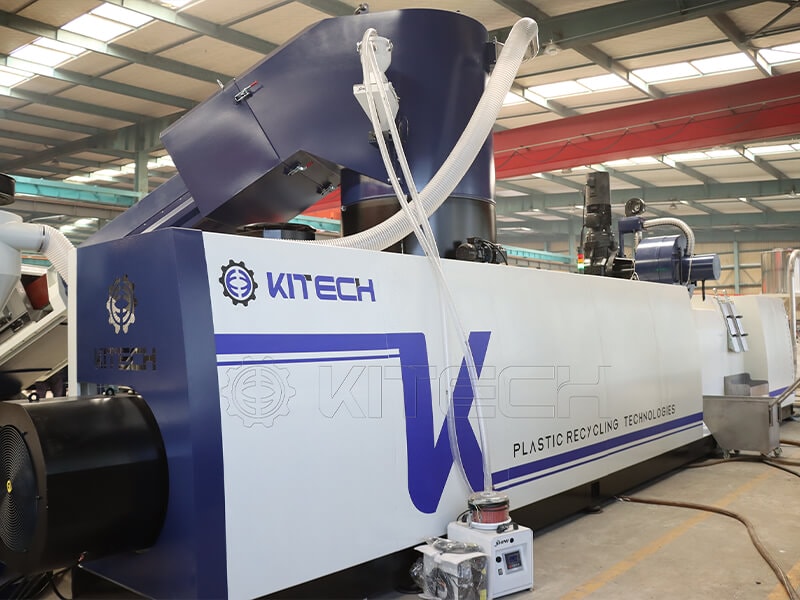JIANGSU KITECH MACHINERY CO.,LTD
The problem of black spots during the granulation process of plastic granulating extruders is a common failure phenomenon, especially on colored and light-colored products. It is often during the final large-scale production process that the performance and color of the product are affected . There is no problem, but after a period of time, customers will complain and ask for returns. At this time, it will be too troublesome to deal with the problem of black spots.

In order to effectively prevent plastic products from being harmed by carbonization, the most critical thing is how to effectively prevent and minimize losses. We need to understand the nature of carbonization and be good at using effective methods to solve and prevent carbonization of plastic products, which requires strict control.
To quickly clean the carbide in the plastic granulating extruder, you need to use harder plastic, or add white mineral oil to clean the recycled material, and increase the temperature by 10 to 15°C. At the same time, the plasticizing ability of the small plastic granulating extruder should be considered. For large and medium-sized plastic granulation extruders, ultra-high molecular weight plastics or their recycled materials can be cleaned with white mineral oil. Plasticizing of large and medium-sized ultra-high molecular weight plastic extruders, ultra-high molecular weight plastic or recycled materials and cleaning with white mineral oil. Because ultra-high molecular weight plastics are relatively hard, when the temperature is high, the cleaning objects will soften and become easy to fall off, which is conducive to the carbide being brought out by the plastic melt. During the cleaning process, the plastic pelletizing extruder repeatedly switches between low speed and high speed. If the motor load is still sufficient, it can be repeatedly stopped and restarted several times during operation to further improve the cleaning effect. When the carbide (black spots) in the melt is significantly reduced, it can be cleaned with the usual plastic until it is clean, and gradually adjusted to the appropriate temperature, then normal production can be achieved.
In the actual production process, plastic products usually isolate the feed port in front of the plastic granulation extruder , discharge the plastic melt in the extruder and the machine head, then turn off the temperature of each zone, and then turn off the power. Because the plastic melt has strong adhesion to metal, it is impossible to completely exclude it every time the machine stops. In the end, there will always be a layer of plastic melt firmly adhered to the extruded barrel and the inner wall of the machine head as well as the screw. After the equipment is shut down, it naturally cools down and remains in high temperature for a long time during the next heating process, causing obvious thermal deterioration, gradually turning yellow, zooming into carbide. According to the conventional shutdown method, effective measures are not taken to seal the die opening and feed port of the machine head, allowing air to enter the machine and cause oxidation, resulting in increased thermal deterioration of the residual plastic in the machine, providing favorable conditions for carbonization.
Because the equipment has a metal structure and the thermal expansion rate is very different from that of plastic, the adhesion of carbonized plastic to metal decreases and it is easy to separate from the inner wall of the barrel, the inner wall of the machine head and the screw of the plastic granulator. Mixed into the plastic melt, it will cause many black spots on the inner and outer walls of the product, which is prone to quality problems such as perforation or leakage. After a long period of time after shutting down, heating and restarting, plastic products are prone to many black spots of different sizes. , the quality requirements of the product cannot be met, and the carbides remaining in the machine after thermal degradation of the plastic are these black spots. Usually, the machine washing method is used to continuously extrude the plastic and remove the plastic melt. The washing time is up to 3-5 hours. If the original ultra-high molecular weight plastic is carbonized and original color products are produced, it will increase the difficulty of machine washing, resulting in longer washing time and higher costs.